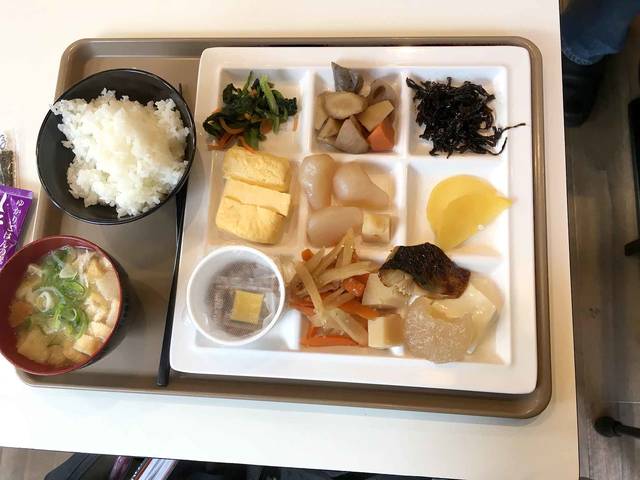Let’s Talk Food: A foodie in Tokyo 2017
Hawaiian Airlines’ flights direct to Haneda, Japan, make it easier for Big Islanders to go to Tokyo. There are three flights a week, so if planned well, you can spend from four days to a week or more in Tokyo.
ADVERTISING
Jim, son Reid and I went on a short trip to Haneda from Kona International Airport and stayed in the district of Sengakuji, where the Sengakuji Temple is located around the corner from our APA Hotel. If you are familiar with history or like Japanese samurai movies, the 47 Ronin from the movie “Chusingura” are buried at this temple. In the front of the temple is a bronze statue of Oishi Kuranosuke, the leader of the ronin. It was difficult for Jim to understand why 47 samurai without a lord would commit hara-kiri, or commit suicide, after avenging their lord’s death, but it is the “Bushido” code of conduct — to be loyal, brave and honorable to their lord.
After taking the last train to Sengakuji at midnight, we were able to walk to a 24-hour ramen and udon shop and enjoy our first meal in Japan.
Breakfast at APA Hotel is included in the room charge. It consists of a wonderful assortment of Japanese foods such as fresh takenoko, or bamboo shoots; green nori from Tokyo tsukudani, or seaweed cooked in a soy sauce based sauce; fresh tofu; fried saba; shredded burbock root, or “gobo”; carrots nitsuke; chicken nishime, or Japanese vegetable stew; konnyaku, or konjac; egg rolls; natto, or fermented soy beans; miso soup; and rice. It is certainly a great start to a morning of shopping and eating.
If you are opening a restaurant, are a chef, or just a cooking enthusiast, the restaurant or kitchenware street or Kappabashi Dougu Street is a must. The huge head of a chef with a mustache is located on the south end of the street and is very distinctive. It is located between Ueno and Asakusa and is a great place to drool at whatever kitchenware you could possibly need or want. There are several shops that carry beautiful platters, plates and rice bowls. You can find lacquerware in every size, as well as trays to place all the little dishes for a teishoku meal.
At Kamata Knife Shop, I watched as the engraver etched a name in Japanese kanji into a knife.
There were several shops that sold only plastic food for a restaurant’s window, from sushi, udon noodles and vegetables to shrimp tempura.
Shops sold every ingredient you would possibly need to cook any Japanese dish. I bought dashi kombu from one of those shops, as I always need it to make “ichi-ban” dashi for stock or miso soup. When I returned, I cut the kombu into 3-inch pieces, which is what I need to make a pot of stock. The dashi kombu should never be boiled, but gently simmered. The white powdery substance on the kombu is naturally formed monosodium glutamate, which gives the finished stock the “umami” flavor.
After you simmered the kombu, remove it and store it in the refrigerator until you accumulated enough to make tsukudani.
Dashi Kombu Tsukudani
From “Washoku” Cookbook
1/4 pounds Kombu left over from making dashi kombu
1 teaspoon white sesame seeds
2 cups water
2 tablespoons rice vinegar
3 tablespoons sugar
4 tablespoons soy sauce
1 tablespoon sake
1 tablespoon mirin
Drain excess water from kombu. Cut into 3/4-inch squares. Put water, kombu and vinegar in a saucepan and simmer for 20 minutes on low heat. Add sugar, then simmer for 10 more minutes. Add the soy sauce, sake and mirin, then boil for 20 more minutes.
Increase the heat, then boil down the liquid. Tip the saucepan to check the amount of liquid; you want to boil down to close to 2 tablespoons. Do not overboil.
Sprinkle in white sesame seeds, let cool in the saucepan. Eat with hot rice.
• • •
After spending a couple of hours walking up and down Kappabashi Douru, we had lunch at Aoi-Marushin Restaurant, famous for its tendon sets, which are tempura served over rice and topped with special sauce they claim is more than 600 years old. Aoi-Marushin was built is 1946. Its tempura is called “flower blossom tempura,” with a little more flour for a skin of the tempura.
Reid ordered the special tendon for me with shrimp, unagi and fish tempura. The special sauce was poured over the three tempuras and was delicious.
The flight to Tokyo from Kona can be as long as 10 hours, depending on the winds, but it is worth the time to get there to eat the wonderful cuisine of Japan.
Foodie bites
• The recent cyclone in Madagascar ruined 30 percent of the island nation’s vanilla crop. Madagascar is the world’s largest producer of vanilla. In 2015, of the 8,294 tons of the global total of vanilla produced, 3,900 tons came from Madagascar. Presently, the Madagascan black nonsplit vanilla beans are $487.50/kg, which compares to India at $420/kg and Papua New Guinea at $210/kg. Watch for a possible increase in the prices of vanilla extract because of this cyclone. However, use only pure vanilla extract and never use imitation, even if the prices go up.
Hawaii Community College’s Culinary Program’s Bamboo Hale and The Cafeteria are closed this week because of spring break. Your generous tips helped the students pay for their trip to Oahu this week.
Email Audrey Wilson at audreywilson808 @gmail.com.




